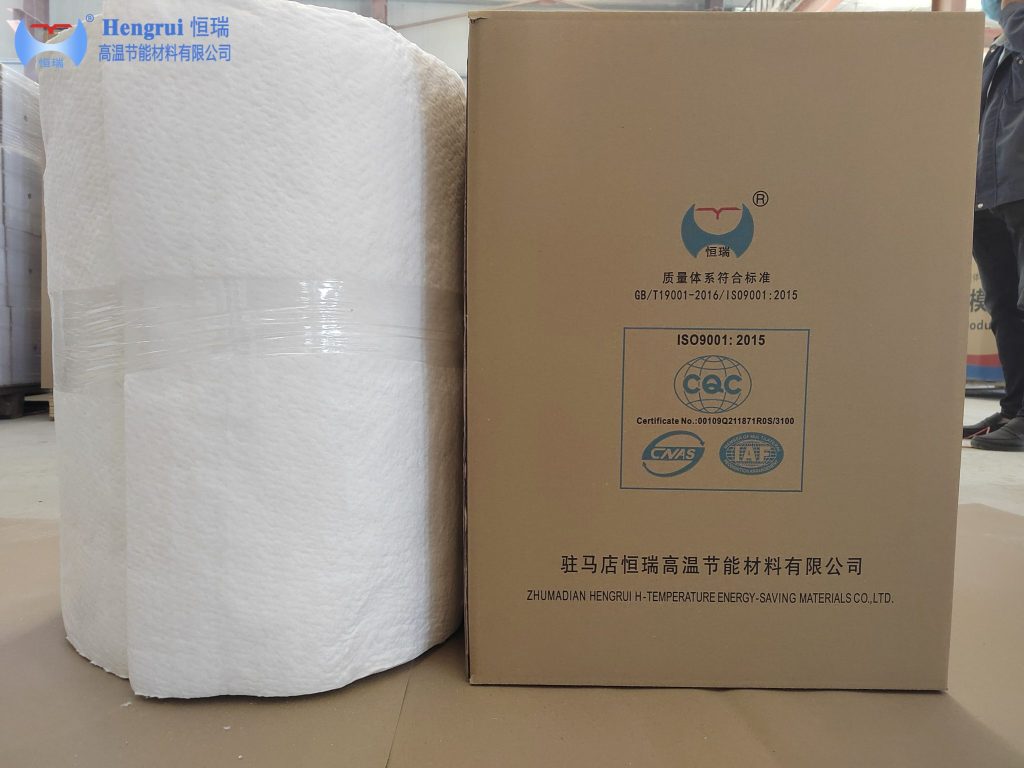In the field of electronic manufacturing, high-temperature furnaces are widely used for processes like sintering, annealing, and stress relief. These “electronic furnaces” demand reliable thermal insulation to maintain temperature stability, reduce energy loss, and protect sensitive components. Ceramic fiber blanket insulation — also known as ceramic fiber blanket fireproof insulation — has become a popular choice due to its excellent insulation properties. It features low thermal mass, resilience to thermal shock, and light weight. For international trade and compliance, the ceramic fiber blanket HS Code is HS CODE: 6806101000.

1.Furnace Body Insulation
Ceramic fiber blanket is used as the primary insulation layer for furnace walls, roofs, and backing layers in electronic kilns. Its low thermal conductivity and low heat storage capacity help minimize heat loss. This allows faster heating and cooling cycles and improves process efficiency. This makes it an excellent alternative to traditional dense refractory bricks. It enables lighter furnace structures and reduces load on the frame.
2.Door Seals and Expansion Joints
Due to its flexibility and elasticity, ceramic fiber blanket fireproof insulation is often used for sealing around furnace doors, expansion joints, and other moving or high-stress areas. It can absorb thermal expansion and contraction from repeated opening and closing. This helps maintain a consistent internal atmosphere and reduces heat leakage.
3.High-Temperature Ducts and Equipment Insulation
Electronic furnaces often include high-temperature piping, heater sheaths, and support structures. Wrapping these components with ceramic fiber blanket insulation helps prevent radiant heat loss, reduces external surface temperature, and improves safety. The blanket also protects the structure from thermal stress and extends the lifetime of furnace peripherals.
4.Sensitive Process Zones & Thermal Buffering
In advanced electronics manufacturing, temperature-sensitive components may require precise thermal buffering. Ceramic fiber blanket can serve as a local thermal shield or buffer layer. It separates high-temperature zones from delicate areas or slow-cooling parts. This helps maintain tight temperature control, improve yield, and reduce the risk of thermal damage to electronic substrates.
Energy Efficiency: The low thermal conductivity and low heat capacity of ceramic fiber blankets significantly reduce energy consumption during heating and cooling cycles.
Lightweight and Flexible: Easy to install even on complex geometry, reducing overall furnace weight.
Thermal Shock Resistance: Ceramic fiber material tolerates rapid temperature changes, ideal for frequent heating cycles.
Easy Installation & Maintenance: Quick installation compared to dense refractory structures.
Safety and Durability: Helps maintain safer surface temperatures and ensures long-term stability.
When selecting a ceramic fiber blanket for electronic furnace applications, it's important to check:
For procurement, always confirm the ceramic fiber blanket HS Code, typically HS CODE: 6806101000 for most international shipments.
Ceramic fiber blanket insulation is a high-performance solution for electronic furnace applications. It provides excellent thermal insulation, fast response to temperature changes, and reliable sealing, all while reducing furnace weight and energy consumption. With proper selection of grade, density, and installation method, ceramic fiber blanket fireproof insulation can significantly improve the efficiency and stability. The service lifespan of high-temperature electronic processing equipment can also be improved.
If you're designing or upgrading an electronic furnace, integrating ceramic fiber blanket insulation — classified under ceramic fiber blanket HS Code: 6806101000 — is a smart choice. It balances performance, cost, and operational safety.



